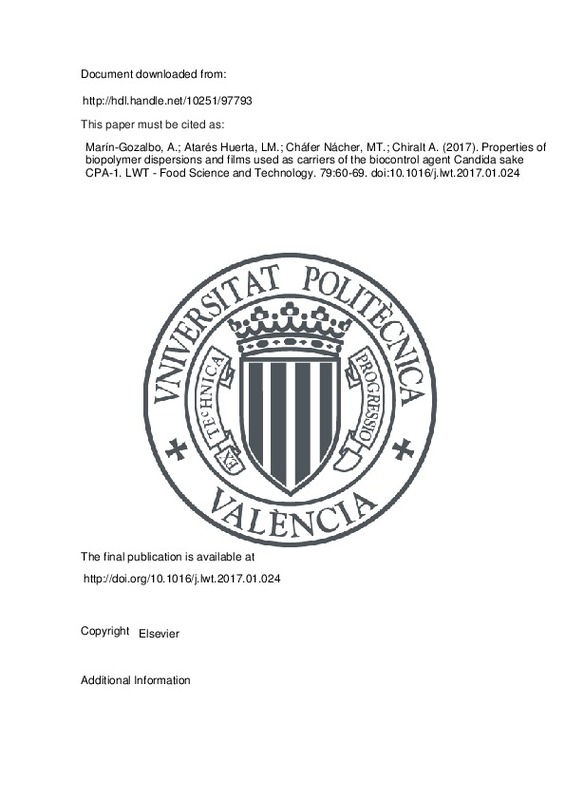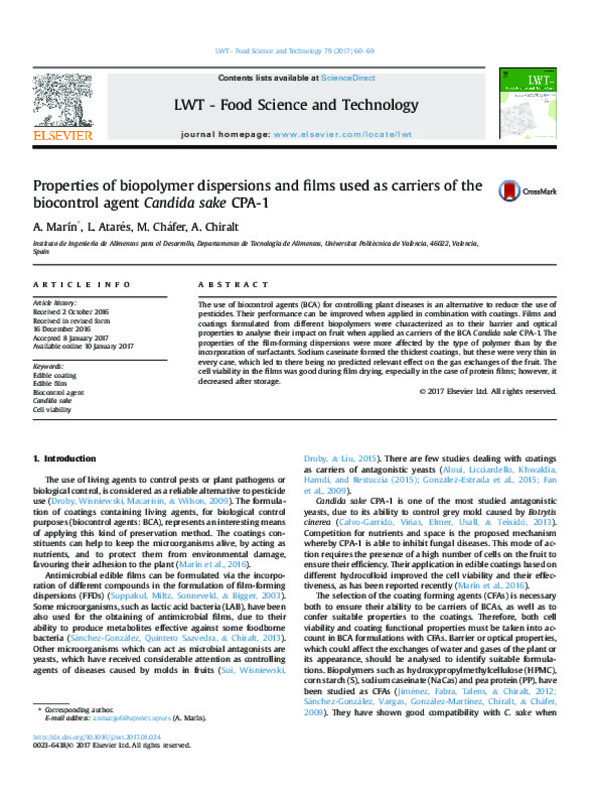JavaScript is disabled for your browser. Some features of this site may not work without it.
Buscar en RiuNet
Listar
Mi cuenta
Estadísticas
Ayuda RiuNet
Admin. UPV
Properties of biopolymer dispersions and films used as carriers of the biocontrol agent Candida sake CPA-1
Mostrar el registro completo del ítem
Marín-Gozalbo, A.; Atarés Huerta, LM.; Cháfer Nácher, MT.; Chiralt, A. (2017). Properties of biopolymer dispersions and films used as carriers of the biocontrol agent Candida sake CPA-1. LWT - Food Science and Technology. 79:60-69. https://doi.org/10.1016/j.lwt.2017.01.024
Por favor, use este identificador para citar o enlazar este ítem: http://hdl.handle.net/10251/97793
Ficheros en el ítem
Metadatos del ítem
| Título: | Properties of biopolymer dispersions and films used as carriers of the biocontrol agent Candida sake CPA-1 | |||
| Autor: | Marín-Gozalbo, Anna | |||
| Entidad UPV: |
|
|||
| Fecha difusión: |
|
|||
| Resumen: |
[EN] The use of biocontrol agents (BCA) for controlling plant diseases is an alternative to reduce the use of
pesticides. Their performance can be improved when applied in combination with coatings. Films and
coatings ...[+]
|
|||
| Palabras clave: |
|
|||
| Derechos de uso: | Reconocimiento - No comercial - Sin obra derivada (by-nc-nd) | |||
| Fuente: |
|
|||
| DOI: |
|
|||
| Editorial: |
|
|||
| Versión del editor: | http://doi.org/10.1016/j.lwt.2017.01.024 | |||
| Código del Proyecto: |
|
|||
| Agradecimientos: |
The authors are grateful to the Spanish Government for the financial support through project RTA2012-00067-0O2 and to the Conselleria d'Educacio of the Generalitat Valenciana, (Spain) for A. Marin's PhD grant (VALi+d 2013). ...[+]
|
|||
| Tipo: |
|










